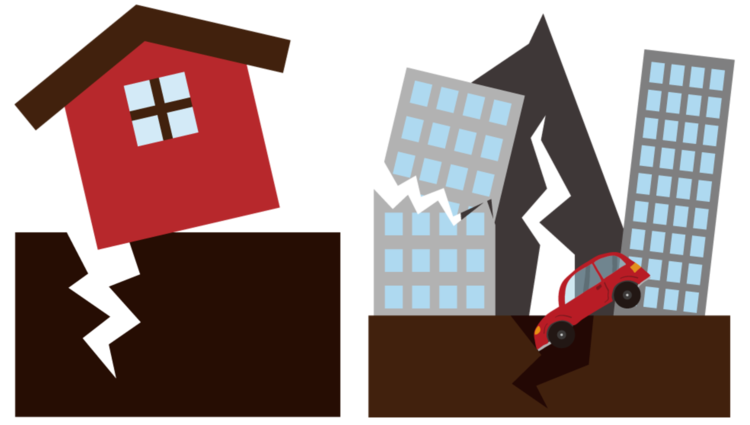
The Pacific Northwest makes a wonderful home thanks to the beautiful geography that also shields its inhabitants from most natural disasters, with the exception of earthquakes. The Cascadia Subduction Zone runs through northern Canada to Northern California, affecting Washington, Oregon and California alike. On June 6th, 2022, at 7pm, a Vancouver pocket of the Southwest Washington region experienced a small earthquake that reminded West-Coasters they are not immune to natural disasters. Luckily, the earthquake caused minimal damage, but heightened our awareness of the reality of earthquakes. Earthquake damage to homes and other buildings is a popular topic at Davidson & Associates – below we put together some resources to help you out. Don’t hesitate to give us a call with questions. Remember, that’s what we’re here for!
Am I covered?
- Most home and property insurance policies exclude earthquake damage. This is a common exclusion, often found with exclusions for flood damage, landslide damage and not properly maintaining your property. Earthquake coverage can be added by an endorsement to some policies, or by using a special “earthquake-only” policy. We have both options for our customers, depending on your unique situation.
Why should I get earthquake coverage?
- We believe that all property owners should consider the option of earthquake insurance as losses occur (i.e., home moves off foundation, chimney cracks, stone/brick façade crack and fall, driveways and walkways crack).
- If you cannot afford to rebuild your home or would not be able to secure a second or primary construction loan, you should consider coverage. If you do not buy earthquake coverage, you are choosing to be liable for the damages to your property as there is little to no emergency relief available.
- If you are a landlord and use the property as an income source, you should consider earthquake coverage to protect your income.
- Use the Home Risk tool to see if your home is located on “land-fill” or other soil types that are prone to liquefaction or shifting.
What is the right coverage?
- It’s important to make sure all structures on the property are covered as needed. Clients typically choose to insure the primary structure (house) and look at insuring detached structures (shops, sheds, ADUs etc.) second.
- Another important coverage for an earthquake policy is “loss of use.” This is the money that will pay for you to stay somewhere else if your home needs to be repaired or rebuilt. The “loss of use” need can often run for more than 24 months and can cost over $10,000 per month in a disaster area. Think, where would you live if your house was condemned by an earthquake?
- Earthquake coverage uses a percentage deductible between 2.5% and 25%. The deductible applies to the full amount insured. For example: If you have a $600,000 home with personal contents coverage of $300,000 and loss of use at $100,000; the total insurance coverage for earthquake would be $1,000,000.
- Most of the time, insurance companies will show you a policy with a 20% deductible to make the premium look better, but the deductible can be as significant as $200,000.
- We recommend a deductible of 10% or less and suggest everyone get a proposal with 2.5% or 5% deductible options, as they are better over the life of the home (cost benefit is in the customer’s favor, not the insurance company).
- Make sure there are no exclusions for stone/brick façade and chimneys. Also, coverage for driveways and walkways need to be understood as concrete tends to crack before frame construction in many cases.
- Check with your agent to make sure your carrier has enough reinsurance to pay out claims in the event of a catastrophic loss. The company should have a minimal financial rating of an “A” and specialty adjusters that can respond quickly.
Resources:
- Monitor the latest earthquake statistics with this tool.
- Use the Home Risk tool to see if your home is located on “land-fill” or other soil types that are prone to liquefaction or shifting.
- Call or text us at 360-514-9550 to talk with your agent or get a quote for earthquake coverage. We are always here to be a resource for you.

